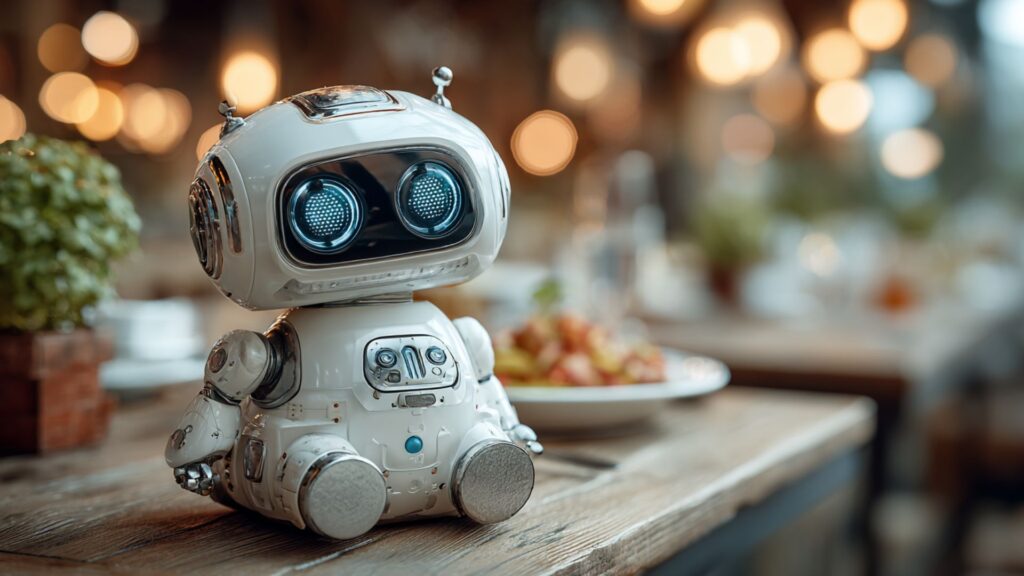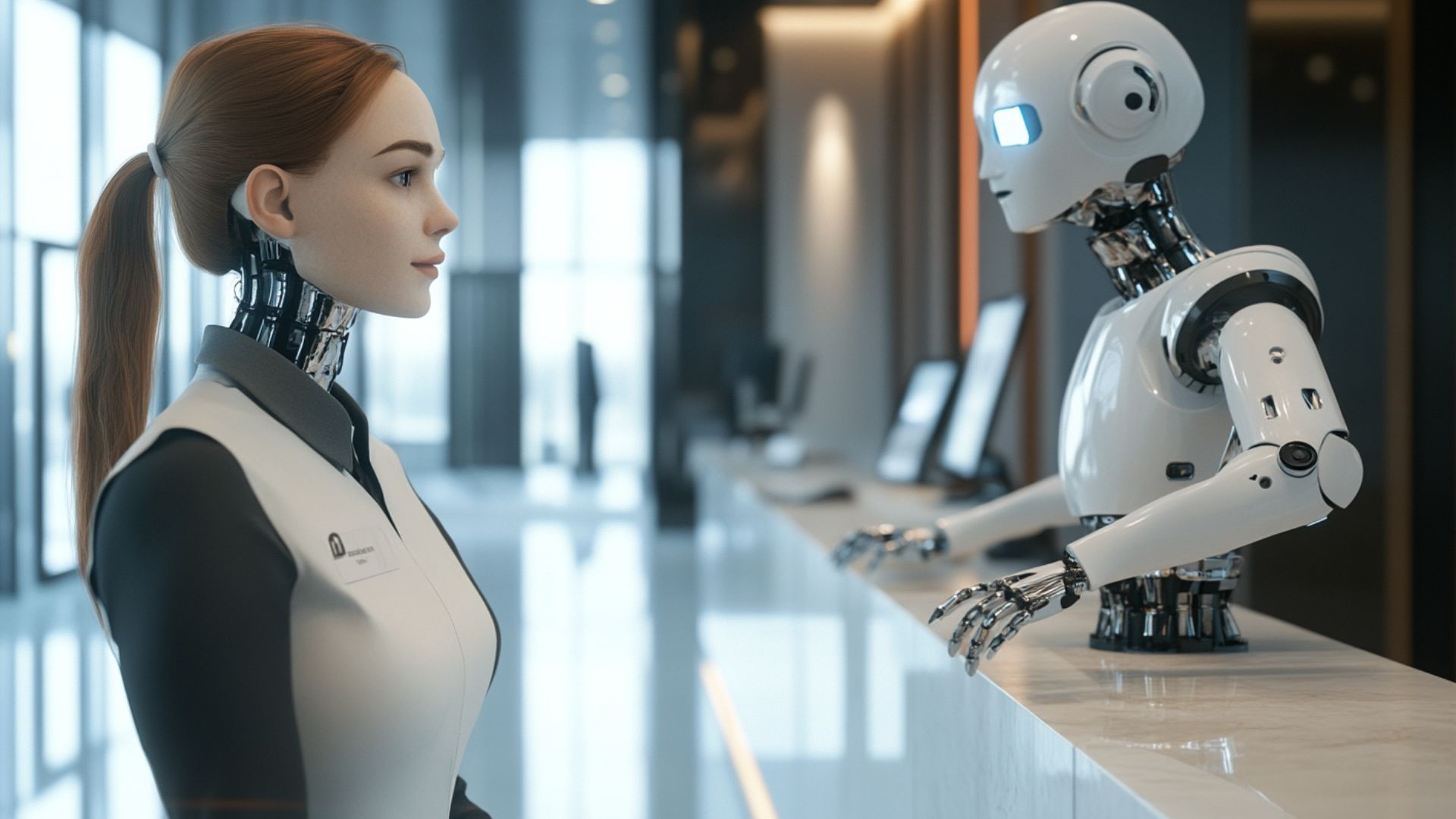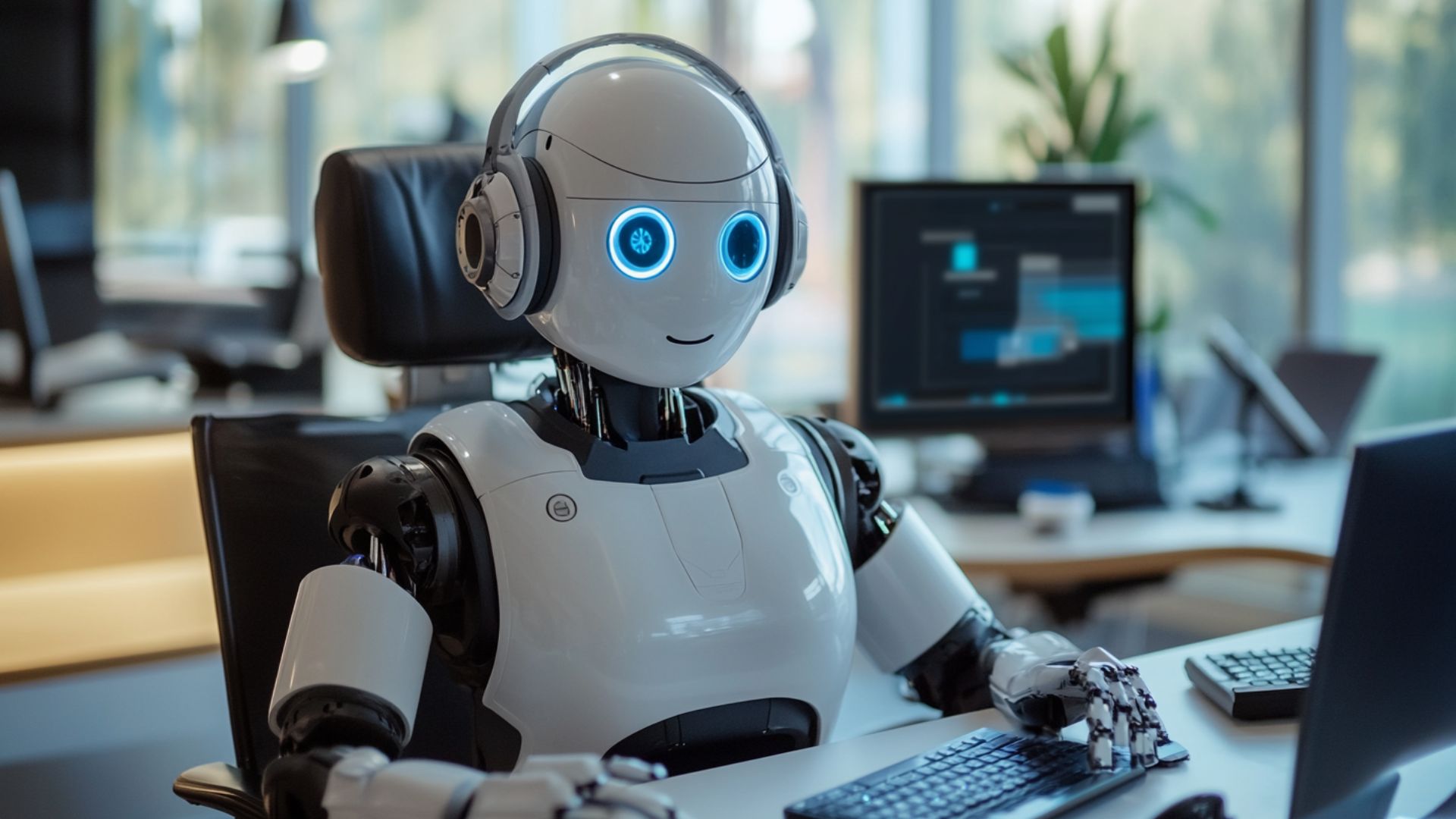AI in Restaurants: How Smart Technology Is Reshaping the Dining Experience

The restaurant industry is rapidly evolving as artificial intelligence (AI) plays an increasingly significant role in enhancing operations. We will discuss AI-powered restaurant bot in real life and how they improve customer service while increasing overall efficiency. AI technologies are optimizing kitchen processes and personalizing customer interactions, transforming the way restaurants operate in today's competitive market. Automation tools streamline kitchen operations by reducing errors in food preparation and inventory management while cutting costs and saving time.
AI analyzes customer preferences to suggest tailored menu items and predicts demand to optimize staffing and reduce waste. From self-ordering kiosks to voice-activated menus, AI in restaurants creates seamless interactions. Small businesses use affordable AI solutions to compete with bigger players. As technology evolves, restaurants are embracing these tools to meet the rising expectations of their customers. The result is a more innovative and efficient food service industry that prioritizes both convenience and quality.
What Is Restaurant AI and How Does It Work?
AI tools for restaurants refer to smart technologies that enhance operations and the overall customer experience. AI for restaurants uses advanced systems to streamline tasks while reducing errors and improving service. It includes several types of artificial intelligence, each serving a unique purpose. These technologies enable restaurants to run efficiently while helping them meet the demands of modern customers. Here are modern technologies:
- Natural Language Processing (NLP): Chatbots use this technology to manage reservations, answer queries, and process orders. AI helps reduce staff workload and speed up service.
- Machine Learning: ML predicts demand and optimizes inventory while personalizing menus based on past orders. ML helps boost sales and satisfaction.
- Robotics: Robots deliver food or cook, ensuring precision and speed in high-volume kitchens.
- Automation: Self-ordering kiosks and digital menus streamline the ordering process while reducing errors and enhancing efficiency.
AI for restaurants transforms the dining industry by saving time, cutting costs, and elevating service quality. From small restaurants to large chains, restaurant AI helps businesses stay competitive. As technology advances, its role in dining continues to grow, creating smarter and more efficient restaurants.
Examples of AI Tools in Restaurants
Restaurant AI is revolutionizing operations and customer service. Below is a table of real-life AI tools for restaurants that showcases how they enhance efficiency and dining experiences. Here are the key components of restaurant AI:
| AI Tool | Description | Example |
| AI Chatbots for Reservations | Handle bookings and customer inquiries via text or voice while reducing staff workload | Greet, Tidio |
| Predictive Ordering Systems | Analyze past orders to forecast demand and suggest menu items while optimizing inventory | McDonald's Predictive AI, Tenzo |
| Smart Kitchen Assistants | Automate food preparation tasks such as cooking or plating while ensuring consistency and speed | Flippy 2, CookRight |
| Self-Service Kiosks with Voice Recognition | Allow customers to place orders via voice or touch while reducing errors and wait times | Ziosk, Wendy's FreshAI |
| AI-Powered Inventory Tools | Monitor stock levels and predict needs while minimizing food waste and costs | Winnow Vision, Ingest AI |
These AI tools for restaurants streamline operations and improve customer satisfaction. Chatbot Greet manages reservations 24/7, freeing staff to focus on other tasks. Predictive ordering systems used by McDonald's AI reduce wait times by anticipating orders. Smart kitchen assistants ensure consistent food quality while self-service kiosks enhance the customer ordering experience.
Bots in Real-Life Restaurants
Smart restaurant technology in real life is no longer science fiction as smart restaurant technology reshapes dining. At Spyce in Boston, robotic kitchens prepare healthy meals in under three minutes while allowing customization via kiosks. CaliBurger utilizes Flippy, a robotic arm developed by Miso Robotics, to flip burgers and fry food while enhancing kitchen efficiency. White Castle utilizes Flippy 2 across 100 locations to manage fry stations while reducing labor strain.
AI waiters, such as Pepper from SoftBank, take orders and process payments. Delivery robots at Rong Heng Seafood Restaurant in China navigate dining areas to serve food and clear tables. Chains like Chipotle use Chippy for automated tortilla chip preparation. Bots restaurants in real life ensure accuracy and hygiene while appealing to modern diners. While some critics worry about job displacement, these robots assist human staff by blending efficiency with the human touch in the dining experience.
Benefits of Using AI in the Restaurant Industry

AI tools for restaurants bring significant advantages that transform operations and customer experiences. Technology in the restaurant industry drives efficiency while cutting costs and enhancing service quality. AI in the restaurant industry helps businesses stay competitive in a fast-paced market. Here are the key benefits:
- Increased Efficiency: AI for restaurants automates repetitive tasks like order processing and inventory tracking, speeding up operations and reducing bottlenecks.
- Reduced Labor Costs: Robots and chatbots cut staffing needs and expenses.
- Faster Service: Self-service technology speeds up orders and delivery.
- Improved Accuracy: Smart systems reduce errors and maintain food quality.
- Personalization: AI suggests menus based on customer data, boosting loyalty.
- Better Resource Planning: Predictive tools optimize inventory and reduce waste.
AI for restaurants transforms operations across the industry. McDonald's utilizes predictive ordering to facilitate faster drive-thru service while small eateries adopt chatbots for reservations, saving time. Technology in the restaurant industry cuts waste by 30% with systems like Winnow Vision. Robotic chefs like Flippy ensure consistent dishes are prepared while AI personalizes menus, boosting sales.
Restaurant Order Automation
Restaurant order automation streamlines online and in-person ordering while minimizing errors and accelerating service. Technology streamlines restaurant operations by improving customer satisfaction and operational flow. AI-powered systems handle orders efficiently through several key methods:
- Voice Ordering: Voice-activated systems allow customers to place orders by speaking their commands. Technology in restaurants processes commands accurately, such as Wendy's FreshAI in drive-thrus.
- POS Integrations: AI integrates with point-of-sale systems to track orders in real time, syncing front and back-of-house operations seamlessly.
- Kitchen Automation: Smart kitchen tools, such as robotic chefs, automate food preparation while systems like Flippy ensure consistent cooking and faster delivery.
Restaurant order automation enhances the customer experience through AI-powered chatbots and kiosks. Domino's streamlines pizza orders while Starbucks' AI cuts wait times. Technology in restaurant settings syncs orders to kitchen displays, reducing errors by 20%. Voice ordering saves 15 seconds in drive-thrus, according to QSR Magazine.
AI and Customer Experience
An AI assistant for restaurants transforms the dining experience by personalizing it. Innovative restaurant technology enhances customer satisfaction through tailored interactions. AI chatbots and systems deliver instant responses and customized recommendations, making dining seamless and enjoyable:
- Recommending Dishes: AI analyzes past orders to suggest menu items while tailoring choices to customer tastes, boosting sales.
- Remembering Preferences: An AI assistant for restaurants stores customer data such as allergies or favorite dishes, ensuring consistent, personalized service.
- Handling Inquiries Instantly: Chatbots provide instant answers to questions about menus or hours while reducing wait times and staff workload.
Data shows that personalized recommendations can increase order values by 10%, according to industry reports. Innovative restaurant technology also tracks feedback to refine suggestions, enhancing loyalty. By anticipating needs and streamlining communication, AI elevates the dining experience. Restaurants that utilize these tools experience higher customer satisfaction and increased repeat business.
Challenges and Limitations of Restaurant AI

Technology in the dining industry offers numerous benefits but presents several challenges. While it enhances efficiency and customer experiences, its implementation faces hurdles. Balancing pros and cons is key to successful adoption:
- Implementation Costs: High upfront costs for AI systems can strain budgets, especially for small restaurants.
- Training Requirements: Staff need training to use AI tools effectively, which takes time and resources.
- Tech Maintenance: Smart restaurant technology requires regular updates and repairs, adding ongoing costs.
- Data Privacy: AI systems collect customer data, raising privacy concerns while restaurants must ensure compliance with regulations.
- Resistance: Staff may fear job loss while customers may prefer human interaction over technology in the restaurant industry.
Despite these challenges, restaurant technology boosts efficiency by reducing order errors by 20%, according to industry reports. It also cuts labor costs through automation. However, high costs deter small businesses as robotic systems like Flippy can cost $50,000. Training staff to use AI tools such as POS integrations takes weeks, slowing adoption. Maintenance demands technical expertise, which not all restaurants have.
Data privacy is critical, as breaches can erode trust. Some customers and staff resist technology, preferring personal service. A 2023 survey found 30% of diners dislike self-service kiosks. Still, technology in restaurants drives innovation. Restaurants can address challenges by starting with affordable AI solutions while prioritizing data security.
Human vs AI: The Balance
Restaurant AI transforms dining but cannot replace human hospitality. The best AI for dining enhances efficiency while the human element remains vital for providing nuanced service and fostering emotional connections. AI streamlines tasks, but human warmth creates memorable experiences:
- Efficiency with AI: AI tools automate orders and predict demand while reducing errors and speeding up service.
- Human Nuanced Service: Staff handle complex requests that AI cannot while adapting to unique customer needs.
- Emotional Connection: Humans build rapport through empathy, fostering customer loyalty unlike the best AI for restaurants.
Restaurant AI handles repetitive tasks while chatbots like Tidio manage bookings, saving time. Predictive systems cut waste by 20%, optimizing inventory. AI for restaurants lacks human intuition, missing subtle cues like mood changes. Staff provide personalized service, and 70% of diners value human interaction. Over-reliance on restaurant AI risks alienating customers who prefer the human touch.
Data and Privacy Considerations
AI tools rely on customer data to personalize the dining experience. AI for restaurant systems collects data including order histories and customer preferences. Handling this data raises privacy concerns while restaurants must ensure ethical use of AI and comply with relevant regulations:
- Data Collection: AI in restaurants gathers data from orders, apps, and kiosks while tracking preferences for tailored suggestions.
- Regulatory Compliance: Restaurants must comply with GDPR and other privacy laws, as non-compliance risks fines and reputational damage.
- Ethical AI Use: Businesses should use transparent restaurant order automation practices while secure data storage and clear privacy policies build customer confidence.
AI restaurant tools, like chatbots, store sensitive data while GDPR mandates consent for data use and secure storage. Restaurants can ensure ethical use of AI by encrypting data and limiting access to authorized personnel only.
The Future of AI in the Restaurant Industry
How is technology changing the restaurant industry? The answer is evident in the future role of AI as robotics will drive smarter and more adaptive operations. Autonomous delivery drones and robots will deliver food to customers more quickly while AI voice ordering will enable seamless and hands-free menu navigation. Kitchen robotics will automate complex tasks such as meal preparation and plating. Advanced predictive analytics will forecast demand with precision while optimizing inventory and staffing.
Restaurants will utilize AI to analyze customer preferences, resulting in hyper-personalized menus. Energy-efficient systems will reduce waste while cutting costs. AI will enhance customer experiences with real-time feedback analysis while small eateries will adopt affordable tools to compete with restaurant chains. AI for restaurants includes faster service, lower errors, and eco-friendly practices that will make restaurants more resilient to market shifts. Dining will blend automation with human touch, becoming more efficient and engaging. Contact us to learn more.
FAQ: AI in the Restaurant Industry
AI in restaurants utilizes tools such as chatbots, robotics, voice assistants, and predictive systems to streamline operations. These technologies automate tasks and enhance customer service while optimizing kitchen workflows, making dining experiences faster and more efficient for both large chains and small eateries.
How is technology changing the restaurant industry? Restaurants deploy it for online ordering, automated food preparation, and customer support through chatbots. Dynamic pricing and menu optimization utilize data analytics to inform decisions, helping enhance sales and operational efficiency.
AI offers faster service, fewer errors, and cost savings while personalizing customer experiences through tailored recommendations. AI improves inventory and staff management, enabling restaurants to operate smarter and more efficiently.
Yes, robots are used in modern dining establishments. AI powers robotic kitchen assistants and self-ordering kiosks that are commonly used in fast-food chains and high-tech restaurants to ensure precision and speed.
AI supports, not replaces, human staff by automating repetitive tasks while hospitality relies on human connection. AI enhances efficiency, enabling staff to focus on delivering personalized service and building customer relationships.
The future of restaurant AI encompasses autonomous delivery and personalized dining through advanced analytics with seamless integration of smart systems. AI will create immersive and customer-focused dining experiences across the industry.


